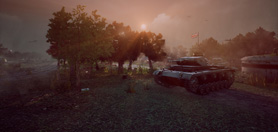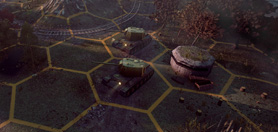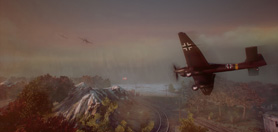The Soviet tank KV-2
The Soviet 52-ton tank KV-2 is, perhaps, the most monstrous and recognizable military vehicle of the beginning of the Second World War. In spite of the fact that the Germans were the leaders of tank force employment at that time, the Panzerwaffe had nothing, even slightly similar to this heavy Soviet tank.
The disproportionally large-sized turret with 152-mm howitzer M-10T was a distinctive feature of the KV-2. At the moment of inventing the tank this gun had excess firepower for the defeat of any Wehrmacht tank and all the rest of the world armies. The tank KV-2 was initially invented for the absolute other purposes- to destroy enemy concrete blockhouses with direct fire while breaking heavily fortified lines of defence. The front armour 70-75 mm thick effectively protected it from the fire of any anti-tank guns of the time.
Interestingly, in the ammunition allowance there was only one high-explosive fragmentation projectile weighing 40 kg. At that calibre and mass, an armour-piercing projectile was excessive. In practice, any howitzer 152mm projectiles could be fired from the KV-2. They could be concrete- piercing, high- explosive, shrapnel, as the standard ammunition was in catastrophically short supply.
After the beginning of the German invasion of the Soviet Union’s territory the fortune didn’t favour the KV-2 anymore. Most these tanks had been lost for the first war months and not so many in the battles, as because of breakdowns and supply problem.
However, there are known cases, when the single KV-2s created serious problems for the advancing Wehrmacht units, destroying the German military hardware practically without any failure. The fire from the 50 - and 75-mm German tank guns didn’t give any result while firing on these monsters. Only a 88-mm flak cannon and sappers with backpack charges could fight against the Soviet heavy tanks.
Interestingly, having seized several KV-2s, the economical Germans placed them in the service of Wehrmacht under the cade PzKpfw KV-II 754 (r). The last of them was destroyed only in 1945 in the battle of Königsberg.


